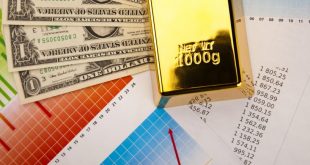The US Dollar continued to extend daily gains, and the DXY was getting close to weekly highs. The headline CPI for September in the US was higher than anticipated, while the core index was in line with forecasts.
US Treasury short-term rates are also rising and getting close to weekly highs. The US Dollar, as expressed by the US Dollar Index, increased in value during the North American session by more than 0.70 percent, reaching 106.50.
The US Consumer Price Index (CPI) data for September and subsequent hawkish predictions on the Fed are mostly to blame for the greenback’s gain. The crisis in Israel and the cautious market environment are encouraging investors to seek safety in the dollar.
The Consumer and Producer Price Index data from September showed higher-than-expected numbers, which served as a reminder to investors that the US economy is beginning to heat up and that the Fed is still data-dependent and may, in this case, consider another rate hike to combat inflation in the coming months.
The DXY US Dollar Index extended gains towards 106.70, seen more than 0.70% gains. The US Consumer Price Index (CPI) registered a 3.7% YoY increase in September, surpassing the market consensus of 3.6% and aligning with the previous monthly figure. In contrast, the Core measure reported a 4.1% YoY rate, meeting expectations and slowing down from the prior 4.3% YoY.
US bond yields significantly rose with the 2-year yield climbing to 5.07% and the 5-year and 10-year rates to 4.69% making the USD gain interest. According to the World Interest Rates Possibilities (WIRP) tool, the odds of a 25 basis point hike (bps) by the Federal Reserve rose to nearly 50% for the December meeting.
According to the daily chart, the US Dollar DXY Index continues to exhibit a short-term technical view that leans towards neutrality with a bearish tendency. A healthy technical correction may be approaching, so traders should keep an eye out for overbought circumstances on the hourly chart.
The Federal Reserve (Fed) is in charge of establishing monetary policy in the US. The goals of the Fed are to stabilize prices and promote full employment. Interest rate changes are its main weapon for achieving these objectives.
The cost of borrowing rises throughout the economy when prices are rising too quickly and inflation exceeds the Fed’s 2% objective. As a result, the US dollar gains strength because foreign investors will find it more desirable to lodge their funds in the US. The Fed may decrease interest rates to encourage borrowing, which devalues the dollar, when inflation falls below 2% or the unemployment rate is too high.

 Noor Trends News, Technical Analysis, Educational Tools and Recommendations
Noor Trends News, Technical Analysis, Educational Tools and Recommendations




